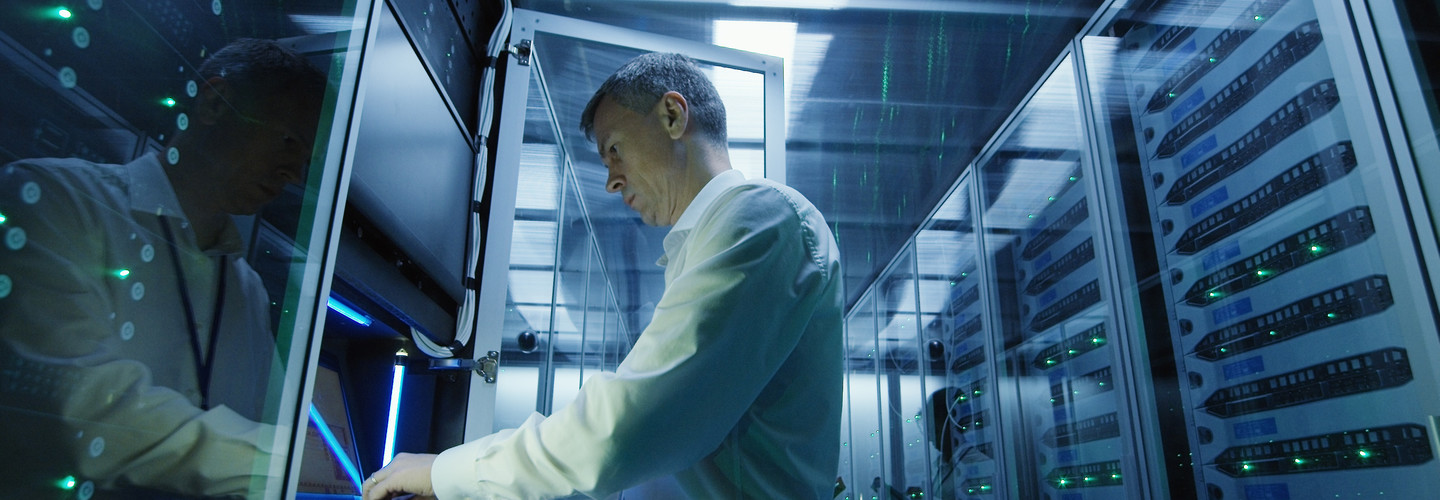How Tech Drives Efficiency During Crises
Technology has been a savior for businesses striving to stay open during the pandemic, and it has exposed new opportunities for how businesses can operate efficiently while keeping their employees safe. “Physical distance is a nonissue, and remote work is becoming much more successful than people thought,” said Gold.
Technology will also help aid in supply chain operations going forward. In the early days of the pandemic, supplies of toilet paper, soaps and disinfectants were disrupted. Those shortages have since eased. “Businesses who build digital supply chain solutions that mitigate against disruption are going to be the winners,” advised Gold. The businesses that were already digital and online before COVID-19 are faring the best during this unprecedented time. “All CIOs and IT organizations should be focused on the race to the new digital normal,” said Gold.
According to consulting company McKinsey, 70 percent of executives said that the current crisis is likely to accelerate pace of digital transformation. Further, McKinsey says that 60 percent of all jobs could see more than 30 percent of their key tasks automated by 2030. “The COVID-19 crisis has given us a sudden glimpse into a future digital world, forcing both organizations and individuals further up the adoption curve overnight,” said Gold.
WATCH: Learn how to build a remote-first culture at your workplace.
How Liberty Mutual Saves Money on Storage
The insurance business is all about the ever-growing demand for data, said Chris Lund, director II of hybrid compute technology for Liberty Mutual Insurance. “When it comes to pricing our policies, we allow all of our customers to customize their coverage to ensure that ultimately they get what they want and nothing more,” Lund said.
Liberty Mutual has been offering more self-service options for their customers. If a policyholder gets into an accident, he or she can fill out a claim online and take pictures of the damage so that the claim can be processed more quickly. All of this creates a lot more data coming into Liberty Mutual, more than 10 percent year-over-year growth. “In terms of Liberty Mutual, that’s 3 to 4 petabytes of data growth,” he said.
This growth creates an infrastructure problem, because the best way to get a good deal on storage is to buy large amounts of storage at one time; you then might not use all that storage for months, quarters or years after you buy it. “Am I buying too much, and then I’m not going to be able to use it in time to get the value for it?” said Lund. Liberty Mutual was an early adopter of HPE GreenLake, the company’s pay-per-use model for buying IT infrastructure, which has allowed it keeping storage costs down.
“We’re able to be more nimble and start small in our capital outlay and really ramp up when an idea takes off,” said Lund. This is an example of how to create savings for other digital transformation projects.
As technology becomes more advanced, businesses can utilize the cloud to save money. “IT equipment accounts for 72.9 percent or $157 million of initial capital expenditures for a typical large data center,” said Gold. Data centers cost a lot of money, and HPE GreenLake can help businesses optimize savings in storage costs, she said.
Before moving to the cloud, Lund was paying huge amounts of capital for storage, and some of it wasn’t being used. The cloud allowed him to only pay for the storage he needed. “With HPE GreenLake’s flexible ‘as a service’ model, Liberty Mutual can now act when there’s a real capacity need, and they don’t have to take a bet on whether or not they need the assets two or three years from now,” said Gold.
To keep up with our coverage of HPE Discover 2020, bookmark this page, follow us on Twitter at @BizTechMagazine or the official conference Twitter account, @HPE_Discover, and join the conversation using the hashtag #HPEDiscover.










